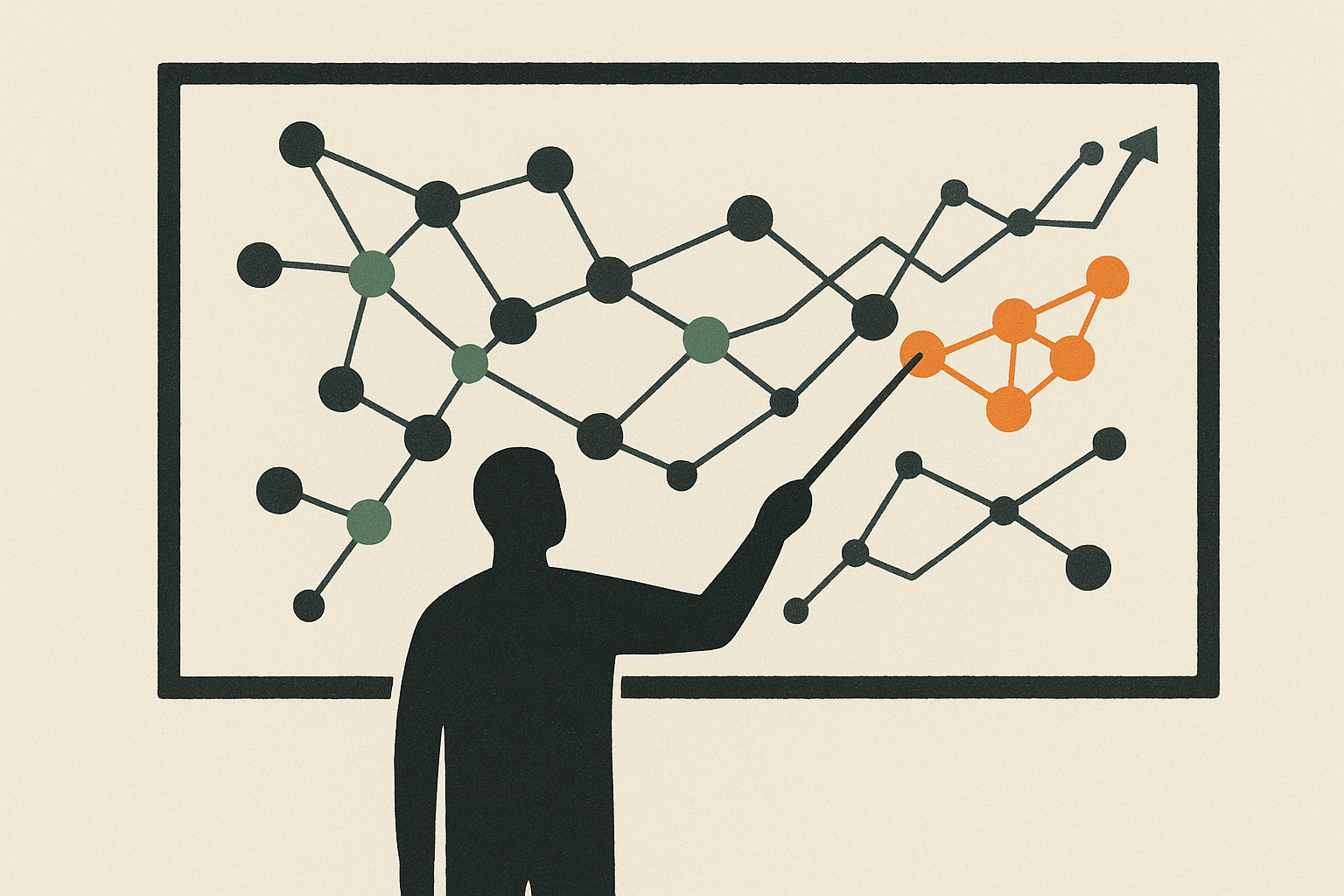Speed vs. strategy: what AI is (and isn’t) solving in foresight today

The arrival of AI in strategic foresight has ushered in a wave of excitement, and for good reason. Tasks that once took weeks can now be done in hours. Horizon scans are automated, trends are clustered, and foresight radars practically build themselves. For teams struggling with time, bandwidth, and data overload, the appeal is obvious.
But there’s a bigger question emerging: in the race to go faster, are we overlooking what it really means to be strategic?
At its core, foresight has never been about speed. It has always been about clarity, relevance, and direction. The point isn’t to process more signals, but to understand which ones matter, why they matter, and what they might mean for the future.
AI can certainly help us move faster. But that is not the same thing as moving smarter.
What AI is solving: scale, speed, and sharper insights
There’s no doubt that AI has transformed the operational side of foresight. It solves several long-standing pain points for professionals and teams alike:
-
Information overload: AI systems can ingest thousands of news items, patents, research papers, and social signals, surfacing emerging themes and anomalies that humans would struggle to identify alone.
-
Repetitive workflows: Manual tasks like tagging, clustering, or formatting radar decks are now automated, freeing up hours of cognitive bandwidth.
-
Velocity of output: With tools like FIBRES Foresight Agents, a first-draft radar can be produced in under an hour, rather than over the course of multiple workshops and spreadsheet marathons.
These gains are not trivial. For many teams, especially those with limited headcount or tight deadlines, AI may be the only way to maintain a consistent foresight rhythm without burning out.
Where human strategy still leads: interpretation, judgment, and action
Yet the true value of foresight has never been about collecting data. It has always been about making meaning from it. And this is precisely where AI still falls short.
AI can surface patterns. It can propose clusters. It can even generate hypotheses. But it cannot fully determine strategic significance by itself.
It doesn’t know your organizational priorities, contextual realities, your stakeholder values, or the cultural nuances that shape your industry. Thus, it can't know with absolute confidence when a signal is noise, or when it might be the start of something transformative.
This is why strategy remains a human function. No matter how advanced the tool, foresight without interpretation is just reporting.
The same applies for the traditional off-the-shelf trend reports. Insight only emerges when professionals apply context, challenge assumptions, and ask the essential question: “so what?”
The real win is combining both
The most effective foresight teams are not choosing between speed and strategy. They are doing both.
AI handles the signal processing, while people focus their energy and creativity on insight development, scenario building, and organizational sensemaking. And ultimately, on action.
This is the model FIBRES was built around. Our Foresight Agents take care of the scanning, structuring, and signal prep. But the human user remains firmly in control.
You define the context. You decide what gets prioritized. You determine how insights connect to strategy. Only you know what you know.
In this model, AI is not replacing strategy. It is expanding what is possible.
Moving from reaction to reflection
One of the quiet dangers of AI-enhanced foresight is the temptation to move too quickly. With so much information at your fingertips, it’s easy to slip into reactive mode, publishing outputs without pausing for reflection. The irony is that faster foresight can sometimes leave teams less aligned, not more.
The antidote is intentional design. Build space for synthesis. Make time to question your assumptions. Involve multiple perspectives. Use AI not just to go faster, but to go deeper.
Foresight is not only about the outcome. The process itself forces you to learn, to think outside the box, to challenge assumptions, and to reframe strategy. AI can accelerate the process, certainly. But if you outsource your thinking, no real value is created.
The goal of foresight is not speed. It is creating the future orientation and shared understanding that enable better decisions.
Let AI do the heavy lifting, not the heavy thinking
AI is changing foresight for the better, when used properly. It reduces friction, accelerates delivery, and makes futures thinking more accessible across functions. But it is not a shortcut to good strategy.
The real magic happens when AI and human expertise work in tandem. When machines process signals, and people turn them into stories. When agents automate tasks, and foresight professionals plan, scope, and guide the vision.
That is where foresight becomes not just faster, but more strategic. Not just efficient, but effective.
Have you considered how you might balance speed with substance in your own foresight work?
If you are curious to see how AI and strategic thinking come together in practice, book a demo and experience how FIBRES Foresight Agents can help.

Panu Kause is the founder and CEO at FIBRES. Before founding FIBRES, he held several management positions and ran his own foresight and strategy focused consultancy.
Stay in the loop
Get our latest foresight tips delivered straight to your inbox. You may unsubscribe from these communications at any time.